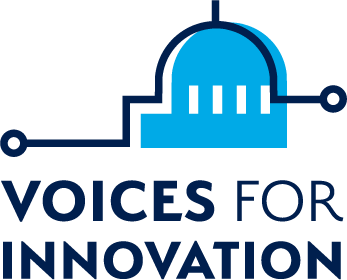Happy holidays! Thank you for being part of Voices for Innovation this year. We hope you will continue to stay engaged in tech policy discussions in 2025.
We want to end the year by sharing a positive story about a new AI tool to help measure and protect biodiversity. Developed by Microsoft’s AI for Good Lab, SPARROW—Solar-Powered Acoustic and Remote Recording Observation Watch—can monitor remote ecosystem health without disturbing wildlife. It’s one more example of the emerging power of AI to bring benefits to all of us—and our planet. You can read more about SPARROW in this blog.
The Executive Briefing will be taking next week off and will return on January 3. Thank you for reading.
This Week in Washington
- Nextgov: The Cybersecurity and Infrastructure Security Agency (CISA) released the updated National Cyber Incident Response Plan into the Federal Register. The drafted plan outlines four tiers: asset response, threat response, intelligence support, and affected entity response. The tiers are designed to help plan for potential destructive cyberattacks on critical U.S. infrastructure.
- Fierce Telecom: The U.S. Supreme Court declined to review a petition from telecom groups that challenges New York’s Affordable Broadband Act. The act requires service providers to offer a 25 Mbps plan for $15 to eligible low-income households. Because the Supreme Court decided not to intervene, the law will go into effect mid-January.
- FedScoop: In the latest string of agency experimentation with generative AI, the Department of Homeland Security (DHS) built an AI-based chatbot called DHSChat. DHS’s AI Corps developed the chatbot as a way for the department to embrace innovative new technology while operating in a safe, secure environment that allows the highest standards of security to be maintained.
Article Summary
- Bleeping Computer: The Texas Tech University Health Sciences Center, and its El Paso counterpart, suffered a cyberattack that disrupted computer systems and applications. The University Health Sciences Center reports that the attack exposed the data of 1.4 million patients, including their social security numbers, physical addresses, treatment information, and more.
- StateScoop: The California Governor announced that after a six-month trial of testing generative AI tools in a closed environment, the state will move to the procurement stage of incorporating the technology into its operations. The state opened the formal procurement process to allow companies to pitch generative AI products that help solve statewide issues such as housing and unemployment.
- The Verge: A new California bill aims to help address “the growing mental health crisis” among young people by requiring social media platforms to display warning labels about the potential risks to kids and teens. If passed, social networks would have to show a “black box warning” to all users during their first time on the platform, regardless of age. The warning would then continue to make weekly appearances.
- Cybersecurity Dive: Last year, a municipal water authority in Pennsylvania was hacked by a threat group linked to Iran. As a result, U.S. Rep. Chris Deluzio (D), whose district was targeted by this hack, is sponsoring a bill that would double cyber resilience funding for local water utilities. The bill, the Water Authority Cybersecurity Protection Act, would authorize $25 million in funding over two years to help design programs for emergency response.
Featured Podcast
- TED Tech
The advance of AI technology has made it harder to distinguish between work done by humans and work done by computers. Companies, like Synthesia, are learning to pair AI tech with video, audio, and animation tools to effectively mimic people through generated lifelike video avatars. Victor Riparbelli, Synthesia CEO, shares insight into the benefits of AI avatars, the risks associated with this technology becoming publicly available, and everything in between. (“The TED AI Show: How AI digital doppelgängers could change the way we communicate w/ Synthesia CEO Victor Riparbelli” – December 16, 2024)
